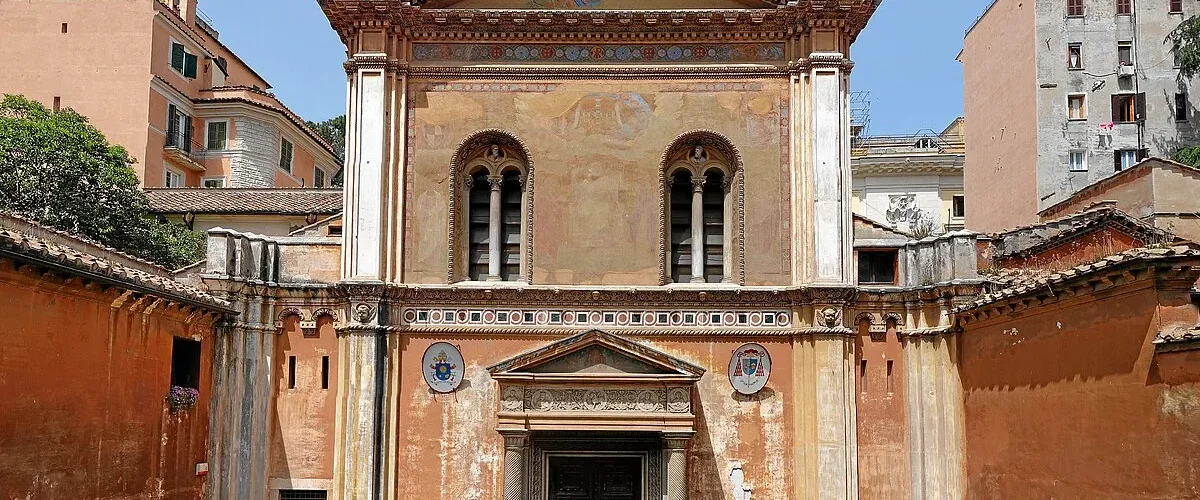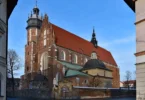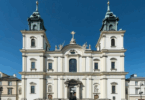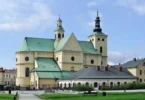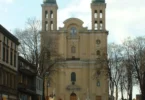Introduction
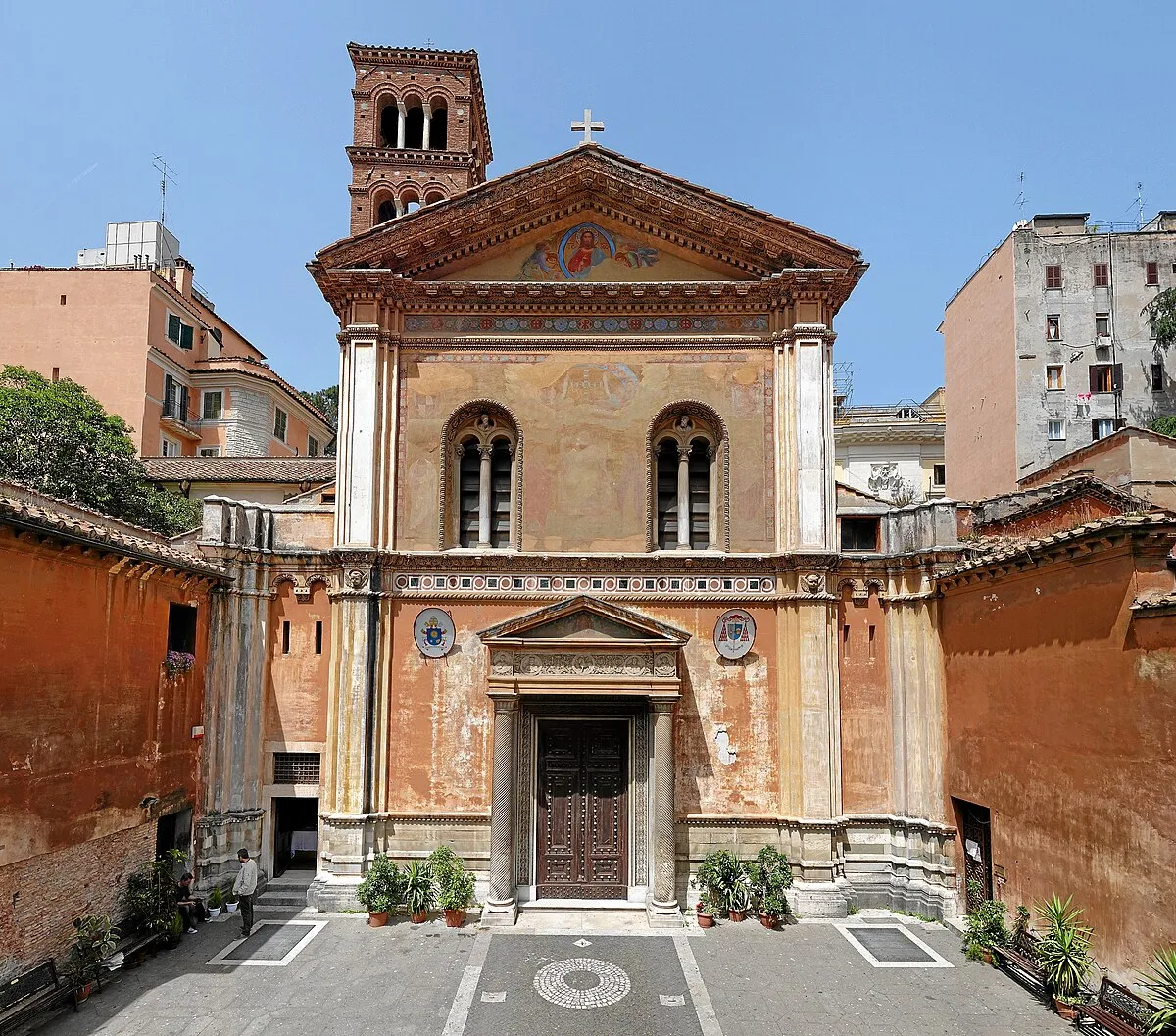
The Basilica of Santa Pudenziana (Spanish—Filipino: Santa Potenciana) is the eldest historical Roman Catholic basilica built in the fourth century. The original shrine building dates back from the second century and is dedicated to Saint Pudentiana, sister to Praxedes the Martyress and both daughters of Saint Pudens (whom mentioned by Saint Paul the Apostle in 2 Timothy, 4: 21). It is one of the national churches in Rome designated for the Philippines and is both piously and culturally associated with the Filipino peoples. It is designated a Basilica by the privilege of immemorial status.
The basilica was the original residence of the Pope during the time of Emperor Marcus Aurelius until 313 A.D. when the Emperor Constantine the Great legalized Christianity and offered the Lateran Palace. The historicity of the site is purported to be an adjective used to describe the previous house of the Roman senator, Lord Pudens, the Domus Pudentiana. Accordingly, the first recorded proprietor of the established basilica was a Christian merchant named Pastore.
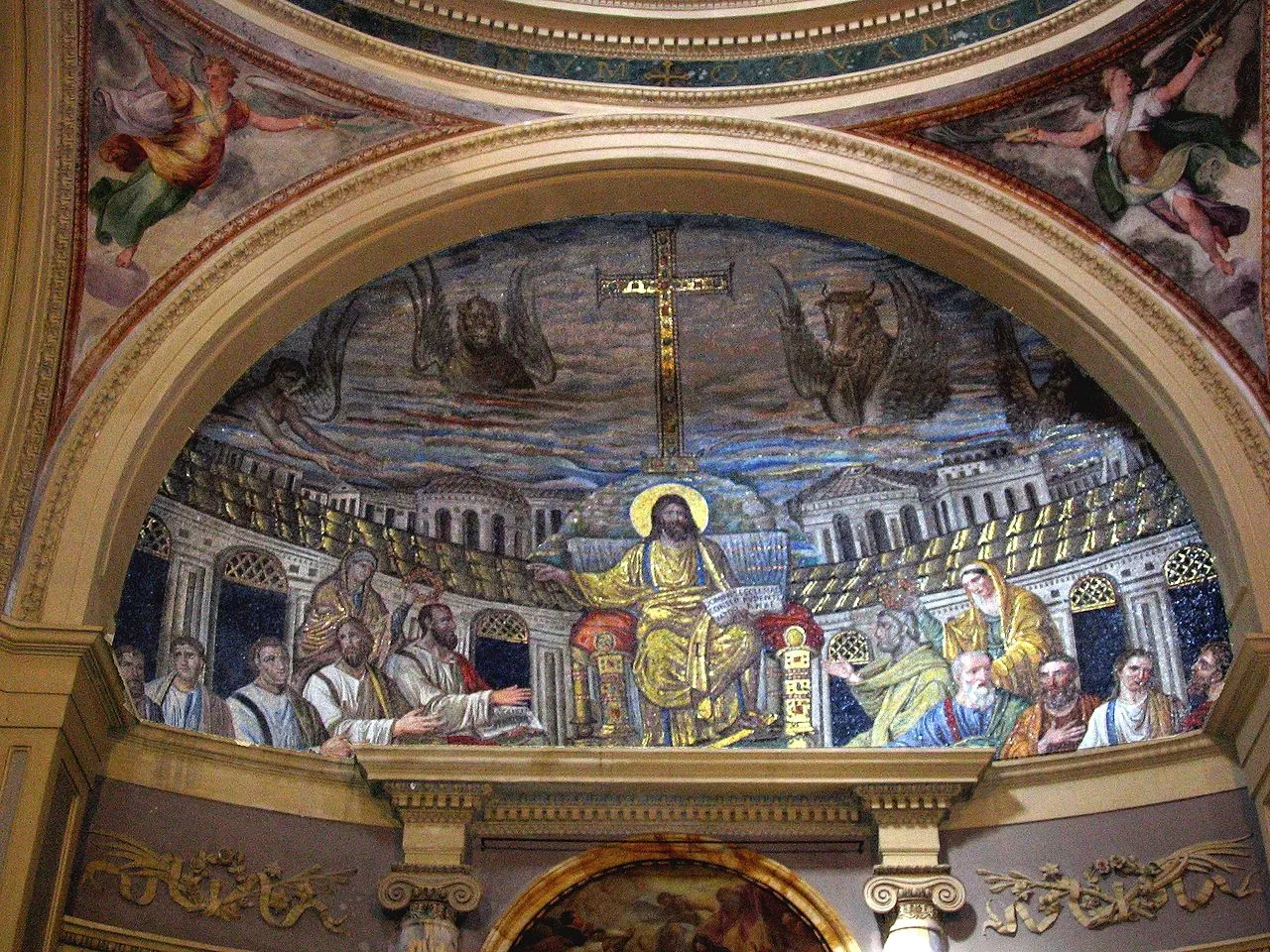
Origins and Early History of the Basilica of Santa Pudenziana
The Basilica of St Nick Pudenziana is one of the most seasoned spots of Christian love in Rome, accepted to have been laid out in the second 100 years. Reasonable developed during the rule of Pope Pius I (A.D. 140-155), it was worked over a confidential Roman house and consolidated segments of a Roman thermæ shower, still noticeable in the apse. At first filling in as the authority home of the Pope, it held this job until 313 A.D. at the point when Sovereign Constantine the Incomparable offered the Lateran Castle for the papacy, close by the conventional authorization of Christianity across the Roman Realm.
In the fourth 100 years, under Pope Siricius, the design was changed over into a Christian basilica. Continuously 499, the basilica was formally acknowledged as a site where the Heavenly Holy observances could be directed, as kept in the assembly acts under the title “De Titulus Pudentis.”
Architectural Features and Restoration Efforts
The structural plan of the Basilica of St Nick Pudenziana mirrors a few transformative phases and reclamation throughout the long term. Arranged underneath current road level, the basilica is gotten to through created iron entryways, with nineteenth century steps prompting a yard. The entry corridor includes a marble frieze from the eleventh 100 years, which initially decorated a gateway and portrays the figures of Pastore, Pudentiana, Praxedes, and their dad Pudens. The nave holds segments from the first structure.
In the mid thirteenth hundred years, the basilica’s Romanesque engineering and ringer tower were added. Francesco da Volterra’s rebuilding in 1388 brought together the three naves into a solitary nave and added a vault, which he planned. The fresco inside the arch, highlighting Heavenly messengers and Holy people before the Friend in need, was painted by Pomarancio. During these reclamations, pieces of a Laocoön bunch were found, however they were never completely recuperated because of an absence of assets. The façade was likewise reestablished in 1870, with frescoes by Pietro Gagliardi. Prominently, the basilica’s right side, tracing all the way back to the rule of Head Hadrian (A.D. 117-138), was essential for a Roman bathhouse.
Architecture of St. Pudentiana, Rome, Italy
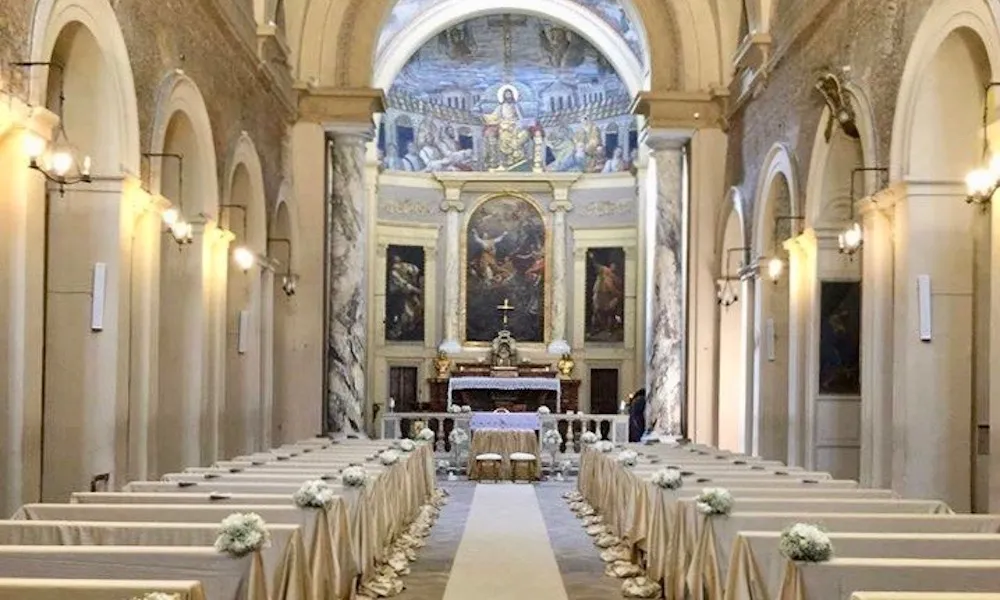
Architectural Style : Early Christian architecture
Architect : Francesco da Volterra
Interior Features of the Basilica
The interior of the Basilica of Santa Pudenziana is rich with significant artistic and historical elements. Notably, behind the high altar, there are three paintings created by Bernardino Nocchi in 1803. From left to right, these represent St. Timotheus, The Glory of St. Pudentiana, and St. Novatus.
The apse mosaic is one of the most striking features of the basilica and is among the oldest Christian mosaics in Rome. This late antique mosaic, dating to the end of the 4th century, is considered one of the finest examples of early Christian art and was heavily restored in the 16th century. Historians and scholars debate whether it was created during the pontificate of Pope Siricius (384–399) or Pope Innocent I (401–417). 19th-century historian Ferdinand Gregorovius even called it the most beautiful mosaic in Rome, making it an important landmark in the study of early Christian iconography.
The Apse Mosaic: Iconography and Symbolism
This remarkable mosaic depicts Christ not as a symbolic figure, such as the lamb or the Good Shepherd, but as a human figure, which was a departure from earlier Christian representations. Christ is shown sitting on a jewel-encrusted throne, wearing a golden toga with purple trim—a clear symbol of imperial authority, emphasizing Christ’s sovereignty. He is shown with a halo and holds a scroll in his left hand with the inscription: “Dominus conservator ecclesiae Pudentianae” (The Lord is the preserver of the church of Pudentiana).
Christ is surrounded by apostles, each depicted in senatorial togas, facing the viewer with individual expressions. The lower portion of the mosaic was removed during a restoration in the late 16th century, and some depictions of the apostles were lost over time, replaced with blank mosaics. Two female figures, representing Ecclesia (the Church) and Synagoga (the Synagogue), are shown holding a wreath above the heads of St. Peter and St. Paul. Above them, the roofs and domes of Heavenly Jerusalem are depicted, or alternatively, the churches built by Emperor Constantine in Jerusalem. A large jewel-encrusted cross rises above Christ, symbolizing the triumph of Christ, while the Four Evangelists (angel, lion, ox, and eagle) are depicted surrounding the cross. These Evangelist symbols are the oldest surviving representations of these figures in Christian art. The backdrop features a blue sky with an orange sunset, further adding to the divine atmosphere.
Some scholars have proposed that the figure of Christ, traditionally assumed to be Christ, may in fact represent God the Father, a unique and rare depiction for this period.
Chapels within the Basilica of Santa Pudenziana
The Basilica of Santa Pudenziana contains several significant chapels, each rich in unique artworks and relics. One of the most notable is the Peter Chapel, located on the left side of the apse. This chapel holds a part of the table where St. Peter is believed to have celebrated the Eucharist in the house of Pudens, with the rest of the table embedded in the papal altar of St. John Lateran. The altar features a 1594 sculpture by Giacomo della Porta, depicting Christ handing the keys of Heaven to St. Peter. Two bronze slabs further explain the significance of this location as the place where St. Peter consecrated the Eucharist for the first time in Rome. The chapel also houses a small annex with 11th-century frescoes.
The Chapel of the Crucifix contains a bronze crucifix created by Achille Tamburini, while the Chapel of the Madonna of Mercy showcases a painting of the Nativity of the Madonna by Lazzaro Baldi. The Chapel of St. Bernard features a painting of St. Benedict and St. Catherine of Siena.
Another significant chapel is the Caetani Chapel, built for the Caetani family, the family of Pope Boniface VIII. Designed by Capriano da Volterra in 1588 and completed by Carlo Maderno in 1601, this chapel is notable for its mosaics on the floor and its Lumachella marble columns. The relief above the altar, created by Pier Paolo Olivieri in 1599, depicts the Adoration of the Magi. A statue of St. Pudentiana, created by Claude Adam around 1650, stands within the chapel. The chapel also contains the well of the sisters, said to house the relics of 3,000 early martyrs, many of whom were hidden by Pudentiana and Praxedes.
Cardinal Titular Church
The Basilica of Santa Pudenziana serves as a titular church for a cardinal, a title granted by the Pope. On 28 June 2018, Pope Francis assigned this title to Cardinal Thomas Aquino Manyo Maeda, the Archbishop of Osaka, Japan.
One of the notable former Cardinal-Priests of this basilica was Cardinal Luciano Bonaparte, who was the great-nephew of Napoleon Bonaparte.
Relics and Significance
In addition to its historical and artistic significance, the basilica holds important relics. The shrine remains a secondary national patroness of the Philippines alongside the Blessed Virgin Mary, as decreed by Pope Pius XII in 1942. The Jubilee year of 2000 marked the permanent enshrinement of an image of Saint Lorenzo Ruiz of Manila within the basilica, recognizing him as a significant patron for the Filipino community.
Feast Day
Feast Day: 19 May
The Feast Day of St. Pudenziana is celebrated on May 19. This day honors St. Pudenziana, a Christian martyr who, along with her sister St. Praxedes, is believed to have been involved in preserving the relics of early Christian martyrs. The feast day highlights the importance of the Basilica of Santa Pudenziana as a significant site of early Christian worship and devotion in Rome.
Church Mass Timing
Thursday : 5:00 PM
Saturday : 5:00 PM
Sunday : 9:00 AM , 10:30 AM , 12:00 PM , 4:00 PM
Church Opening Time:
Monday : 9:00 am – 11:30 am
Tuesday : 9:00 am – 11:30 am
Wednesday : 9:00 am – 11:30 am
Thursday : 9:00 am – 11:30 am
Friday : 9:00 am – 11:30 am
Saturday : 9:00 am – 11:30 am
Sunday : Closed
Contact Info
Address :
Via Urbana, 160, 00184 Roma RM, Italy
Phone : +39064814622
Accommodations
Connectivities
Airway
Ciampino Airport (CIA) to Basilica of St. Pudenziana, Rome, Italy distance 32 min (26.7 km) via A90.
Railway
Termini to basilica of st. pudenziana rome italy distance between 5 min (1.1 km) via Via Rattazzi.

